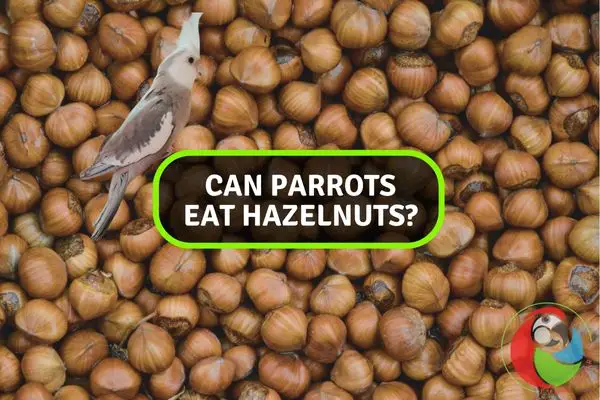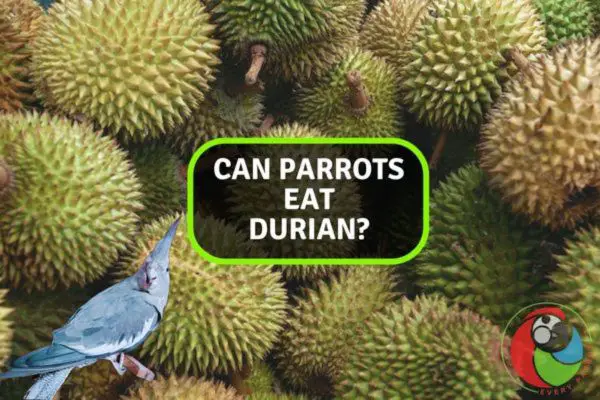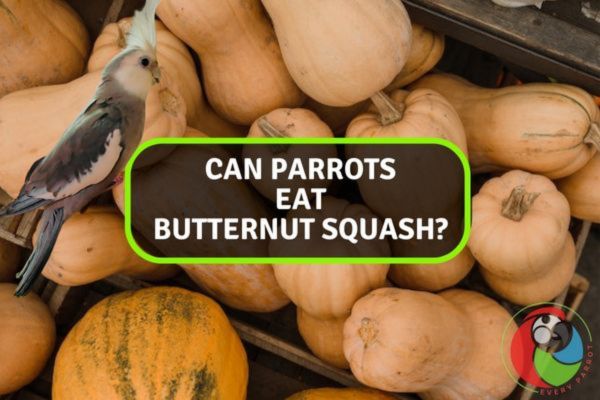Spicy Dilemma: Can Parrots Safely Enjoy Chilies?
Parrots are vibrant, intelligent birds that make wonderful pets. Their colorful plumage and ability to mimic speech are just a couple of reasons why parrots like macaws, cockatoos, and parakeets are so popular. As a parrot owner, you want to make sure your feathered friend stays happy and healthy. That means providing a balanced diet full of nutrients.
Many parrot owners wonder if human foods like chilies can be part of that diet. Well, the answer is yes; parrots can eat chilies in moderation. Chilies contain beneficial nutrients and capsaicin, which may boost your parrot’s health. But the spiciness also poses some risks if your parrot eats too many.
Let’s take a more in-depth look at the nutritional profile of chilies, the potential benefits they offer parrots, and any possible drawbacks to be aware of. This will help you make an informed decision about whether to share chilies with your parrot.
Can You Feed Chili to Your Parrots?
Parrots can eat mild chili peppers in moderation as part of a varied diet. Chili peppers contain vitamin C, vitamin A, iron and capsaicin, which has anti-inflammatory effects. Small amounts of mild chili can provide flavor and nutrition.
Remember that you have to be very careful with the type and quantity of chili you feed parrots. Avoid hot peppers like jalapenos or habaneros, which are too spicy. Only offer mild chilis like poblanos or Anaheims. Remove all seeds and veins first, as these contain the highest concentration of capsaicin.
It’s also crucial to only feed tiny amounts of diced mild chili once or twice a week at most. Start with just one or two tiny pieces and gradually increase over time while observing your parrot’s reaction. Promptly remove any uneaten chili.
While chili peppers can add zest, they lack many nutrients parrots need. So be sure to provide plenty of vegetables, fruits, whole grains, nuts and pellets as the main diet components rather than relying on chili for nutrition.

Chilies: Nutritional Profile
Chilies belong to the capsicum family of vegetables along with bell peppers and jalapeños. There are many different varieties like cayenne, habanero, and serrano. They range from mild to very spicy depending on their capsaicin content.
In general, chilies are low in calories but packed with vitamins, minerals, and antioxidants. Some of the top nutrients found in chilies include:
- Vitamin C – Supports immune function and collagen production.
- Vitamin B6 – Important for metabolism and red blood cell formation.
- Vitamin K1 – Plays a role in blood clotting and bone health.
- Potassium – Helps nerves and muscles function properly.
- Copper – Needed for iron absorption and red blood cell production.
- Vitamin E – An antioxidant that protects cells from damage.
- Beta-carotene – An antioxidant that converts to vitamin A to support eye and skin health.
Chilies also contain a compound called capsaicin that gives them their heat and offers potential health benefits.
Spicing Up Parrot Health: Exploring the Benefits of Chilies
The nutrients and capsaicin in chilies may provide some advantages for your parrot’s health. Here are a few of the top benefits:
- Immune Support – The vitamins A, C, and E in chilies act as antioxidants to strengthen your parrot’s immune system and help fight disease.
- Cardiovascular Health – Capsaicin may have anti-inflammatory effects to support heart health. The potassium in chilies is also good for blood pressure.
- Healthy Feathers – Many nutrients in chilies, like vitamin E, copper, and beta-carotene, contribute to bright, colorful plumage.
- Strong Bones – Vitamin K1, copper, and other minerals promote healthy bone density in your parrot.
- Healthy Vision – Lutein and zeaxanthin in chilies support eye health and vision, especially as your parrot ages.
- Brain Function – Chili peppers provide vitamin B6 to help with nerve cell communication, cognition, and mood regulation.
The Chili Conundrum: Is It Safe to Feed Parrots Spicy Peppers?
Chilies can benefit parrots nutritionally, but their spiciness does come with some cautions. Here are a few potential downsides to be aware of:
- GI Irritation – Too many chilies may irritate your parrot’s mouth, crop, and digestive tract. Signs include excessive thirst, loss of appetite, and regurgitation.
- Respiratory Issues – Capsaicin residue on feathers near the face can irritate nasal passages and air sacs.
- Danger of Choking – Due to their round shape and small size, whole chilies pose a choking hazard for parrots.
- Discomfort – Some parrots seem to dislike or feel distressed by the spicy sensation of chilies. Watch for signs like a head shaking or wiping its beak repeatedly.
- Skin Irritation – Capsaicin on feathers could cause itchiness, redness, and burning sensations on your parrot’s skin.
To avoid these risks, introduce chilies slowly and stick to mild varieties. Remove seeds, cut chilies into small pieces, and offer only 1-2 times per week. Also, provide plenty of fresh water to help dilute the spicy oils.
What Safety Precautions Should I Take Before Offering Chilies to My Parrot?
It’s smart to take some basic precautions before feeding chilies to your parrot:
- Research your parrot’s tolerance – Some species or individual parrots handle spice better than others.
- Remove seeds – They can pose a choking risk.
- Cut into small pieces – Makes it easier to chew and digest.
- Pick mild chilies – Try ancho, cherry bomb, paprika, or pepperoncini to start.
- Offer just a taste at first – Watch closely for signs of discomfort before increasing the portion.
- Have water available – Helps dilute capsaicin oils that cause heat.
- Don’t touch face afterward – Capsaicin residue on hands can burn eyes or mouth.
- Monitor droppings – For any indication of digestive upset.
Feeding Your Parrot Chilies: Tips for Safe and Enjoyable Consumption
Once you’ve determined your parrot can tolerate chilies, here are some tips for serving them:
- Wash thoroughly to remove any dirt or residue.
- Cut off the stem and remove all seeds, then rinse again. Seeds can cause choking.
- Slice chilies into small, thin strips your parrot can easily chew and swallow.
- Place chopped chilies in a clean bowl. Offer a few small pieces at a time until you gauge interest.
- Sprinkle diced chilies over healthy foods like vegetables, beans, rice, pasta, or chopped meat. This makes it easier to consume just a little.
- Consider diluting heat by mixing a small portion of chopped chili with a larger portion of sweet bell pepper.
- Offer chilies at room temperature, not hot. High temperatures intensify the burn.
- Provide a bowl of fresh water for rinsing the beak and cooling the burn.
- Wash hands, bowls, and utensils thoroughly after use to avoid residue contact.
- Start with just 1-2 times per week and in small amounts. Gradually increase based on tolerance.
Chili for Parrots: How Can You Include Into Parrot’s Regular Diet?
Here are some tips for regularly incorporating chilies into your parrot’s diet:
- Add small amounts of diced chili to pellet food or seed mix. This incorporates it into their regular meals.
- Offer a chopped chili chunk along with nutritious table foods at least 2-3 times per week.
- Use chili powder or chili flakes to season cooked beans, grains, veggies, or lean proteins for your parrot.
- Rotate different mild chili varieties like ancho, guajillo, and chipotle to add diversity.
- Mix a small portion of chopped chilies into parrot chop recipes along with fruits and veggies.
- Sprout chilies to boost nutrients and make them easier to digest.
- Grow chilies yourself to control spice levels and avoid pesticides.
- Always monitor consumption and watch for signs of digestive upset or discomfort.
- Adjust quantity and frequency based on your individual parrot’s tolerance and preferences.

Savory Symphonies: Dishes to Elevate Your Mild Chili
Here are some healthy recipes featuring small amounts of mild chili for your parrot:
- Diced Veggie Mix – Add a few diced pieces of mild chili to chopped vegetables like kale, and broccoli.
- Brown Rice – Stir a small diced chili pepper into freshly cooked brown rice.
- Chili Polenta – Mix a minced mild chili into cooked polenta along with veggies.
- Chili Bean Bake – Lightly bake pinto beans with a touch of mild chili seasoning blend.
With caution and moderation, mild chili peppers can add a little zesty flavor and nutrition to your parrot’s diet.
Conclusion
While parrots can eat chilies, their spiciness requires caution and strict moderation to prevent adverse effects. Stick to mild varieties, remove seeds and veins, and start with just a tiny amount at first. Avoid hot chilis, which are unsafe.
By starting slowly, making safety a priority, and paying close attention to your parrot’s response, chilies may provide some nutritional benefits without harm.
Chilies are not a necessary part of the diet. If it causes distress, there are many alternatives to provide a healthy, balanced menu for your parrot. With some informed trial and error, you can determine if a touch of chili spice is right for your feathered friend.








